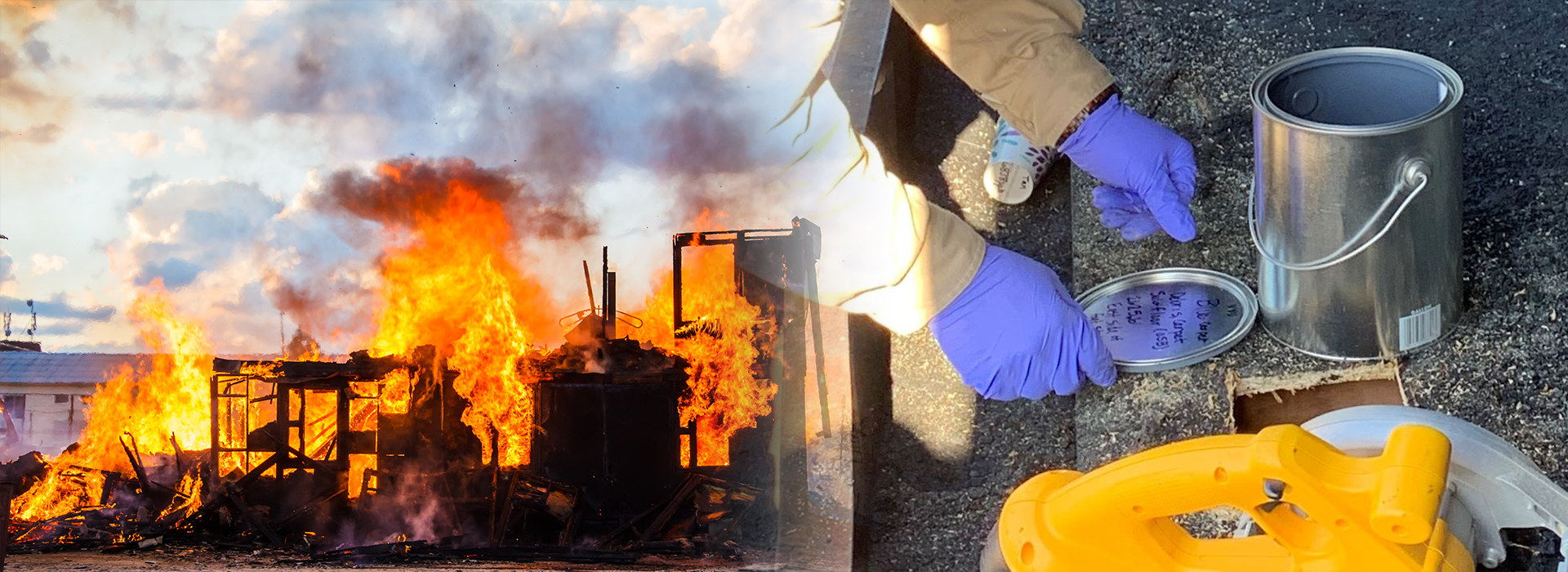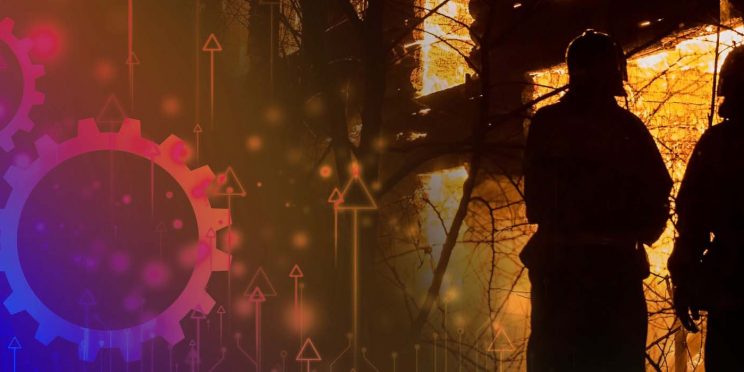← Additional Portable Instrumentation for On-Scene Fire Debris Analysis Resources
This webinar originally occurred on April 6, 2021.
Duration: 1.5 hours
Overview
This multi-year effort evaluated the application and limitations of field portable Gas Chromatography/Mass Spectrometry (GC/MS) systems. The testing included three bench-top burns, nine flashover burns and 139 fire scenes with hundreds of samples processed. The process for collecting fire scene samples aligned with industry standards to include canine alerts, Photoionization Detector (PID) confirmation, evidence collection in fire debris containers, and GC/MS sampling of area of interest. The findings offer insight into the future of obtaining lab quality GC/MS data from the fire scene.
Canine detection teams have been in use by fire investigators since the late 1980s. They have tremendous sensitivity in searching many environments. If properly trained, they have very high rates of accuracy for the detection of ignitable liquid residues at even badly damaged fire scenes. While 100% accuracy cannot be claimed, they are accurate enough to provide a high degree of probability for the investigator to advance the investigation and recover samples for lab confirmation (by GC/MS per ASTM E1618). However, the canine cannot confirm specific products and the investigator can’t offer a canine alert as proof of the presence of an ignitable liquid. It was the intent of this study to ultimately combine the use of canines, PID detection, and field portable GC/MS.
This project set out to use solid phase micro-extraction (SPME), a process that has been successful in trapping a variety of volatiles from both air and water. It requires minimal handling as the analyte is absorbed directly onto the SPME fiber (a specialized polymer), which is then inserted into the heated injection port of the GC/MS to be driven off. SPME was approved for use in sampling fire debris under ASTM E2154. It requires no contact with any solid substrate and is very sensitive, but the small fiber could be easily over-saturated, producing distorted distributions of multi-component mixtures. To minimize that problem, the sampling time for the fiber’s exposure had to be adjusted to the concentration of hydrocarbon vapors in the environment to be sampled. This is easily accomplished with the ppbRae 3000 PID as it was sensitive, fast, and accurate in low ppm-ppb range. This was the method used in nearly all of the fire tests included here.
The use of GC/MS requires highly specialized analytical systems that, until recently, could be found only in fixed lab installations. It was the intent of this study to see if recently introduced field-portable GC/MS systems could provide laboratory quality data to fire scene investigators. This has become necessary as public forensic labs have found themselves badly backlogged and have severely reduced the time and personnel available for fire debris analysis. This has resulted in delays that have seriously hampered fire investigations. This study was an attempt to establish whether field-portable GC/MS systems currently on the market could provide accurate lab results to field investigators.
Detailed Learning Objectives
- Attendees will be able to describe the application and limitations of field portable GC/MS technology used at the fire scene.
- Attendees will be able to describe the application and limitations of photoionization detector (PID) technology in support of fire/arson investigations.
- Attendees will be able to assess the impact of the fire/arson investigator having accurate GC/MS data while still at the fire scene.
Presenters
- John D. DeHaan, Ph.D. | Fire-Ex Forensics, Inc.
- Douglas Byron | FAST Inc.
- David Matthew, M.A. | Research Coordinator
- Rick Jones | Forensic Investigations Group
- Ross Harper, Ph.D. | Ross J Harper Consulting
Resources
- FTCOE Video Series, February 2022: The Field Application of GC/MS For Fire & Arson Investigations Video Series
- DeHaan, J. D. (2021). Enhancing fire scene investigations through new technologies. Fire & Arson Investigator, 71(3).
- DeHaan, J. D., Matthew, D., & Dobson, G. S. (2014). On-scene characterization of flammable liquid vapors using GC/MS and SPME sampling. Proceedings of the 7th International Fire Service Investigation Science & Technology, 185−196.
- DeHaan, J. D., Dobson, G. S., & Matthew, D. (2015, January 19). Adding science behind the canine: Leveraging technology solutions to support rather than replace dogs in arson investigations. The Analytical Scientist.
Funding for this Forensic Technology Center of Excellence webinar has been provided by the National Institute of Justice, Office of Justice Programs, U.S. Department of Justice.
The opinions, findings, and conclusions or recommendations expressed in this webinar are those of the presenter(s) and do not necessarily reflect those of the U.S. Department of Justice.
Contact us at ForensicCOE@rti.org with any questions and subscribe to our newsletter for notifications.




